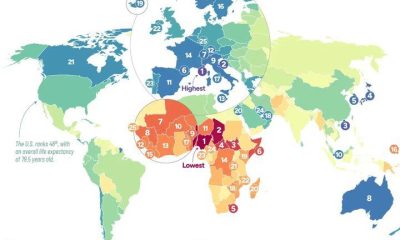Experts at Renaissance Capital (Rencap), have predicted the foreign reserve to fall below $30 billion if some measures are not taken. Although oil may only account for 9% of GDP, it had generally been acknowledged as an important facilitator of economic activity.
In their analysis, they revised down the growth forecast for Sub-Sahara Africa from 3.5% to 1.3% which is occasioned by deteriorating external reserves and weakened currencies.
The crash in crude oil prices has made the already fragile Nigeria’s economy vulnerable to recession. This is because about 60% of the Federal Government’s revenue and 90% of their export revenue comes from oil.
As a reaction to the crash in crude oil prices, coupled with a sharp decline in the country’s foreign reserve, the Central Bank of Nigeria (CBN) on March 20, announced the collapse of the multiple exchange rate and the unification of the official rate, rate to BDC operators and the rate for importers and exporters (I&E) window.
The apex bank also devalued the naira at the I&E window to N380 per dollar from N365 per dollar. The bank’s rate has also been adjusted from N306 per dollar to N360 per dollar. However, the devaluation fell short of the fair value which should be N410 per dollar.
Analysts from Rencap, however, are suggesting that the value of the Naira should be closer to N450 per dollar rather than N400 per dollar.
Following a significant drop in the country’s foreign exchange earnings and huge import demand, the Naira will continue to come under pressure to depreciate further as Nigeria’s foreign reserves continue to decline rapidly.
Going by the trend in 2014/2015, when the country was faced with the similar circumstance of the crash in oil prices, the external reserves is going to be declining by $1 billion monthly over the next 6 months.
At that rate, the external reserves, which was about $36.3 billion as at February, is expected to go below $30 billion by September.
Experts at Renaissance Capital (Rencap), have predicted the foreign reserve to fall below $30 billion if some measures are not taken. Although oil may only account for 9% of GDP, it had generally been acknowledged as an important facilitator of economic activity.
In their analysis, they revised down the growth forecast for Sub-Sahara Africa from 3.5% to 1.3% which is occasioned by deteriorating external reserves and weakened currencies.
The crash in crude oil prices has made the already fragile Nigeria’s economy vulnerable to recession. This is because about 60% of the Federal Government’s revenue and 90% of their export revenue comes from oil.
As a reaction to the crash in crude oil prices, coupled with a sharp decline in the country’s foreign reserve, the Central Bank of Nigeria (CBN) on March 20, announced the collapse of the multiple exchange rate and the unification of the official rate, rate to BDC operators and the rate for importers and exporters (I&E) window.
The apex bank also devalued the naira at the I&E window to N380 per dollar from N365 per dollar. The bank’s rate has also been adjusted from N306 per dollar to N360 per dollar. However, the devaluation fell short of the fair value which should be N410 per dollar.
Analysts from Rencap, however, are suggesting that the value of the Naira should be closer to N450 per dollar rather than N400 per dollar.
Following a significant drop in the country’s foreign exchange earnings and huge import demand, the Naira will continue to come under pressure to depreciate further as Nigeria’s foreign reserves continue to decline rapidly.
Going by the trend in 2014/2015, when the country was faced with the similar circumstance of the crash in oil prices, the external reserves is going to be declining by $1 billion monthly over the next 6 months.
At that rate, the external reserves, which was about $36.3 billion as at February, is expected to go below $30 billion by September.

 Comments and Issues6 days ago
Comments and Issues6 days ago
 Health6 days ago
Health6 days ago
 Latest5 days ago
Latest5 days ago
 News7 days ago
News7 days ago
 Latest6 days ago
Latest6 days ago
 News1 week ago
News1 week ago
 Labour1 week ago
Labour1 week ago
 Comments and Issues6 days ago
Comments and Issues6 days ago
